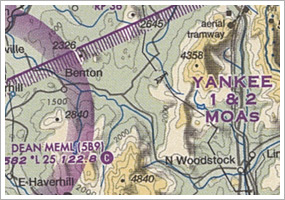Custom content for the Nov. 11, 2011, issue of 'AOPA ePilot' newsletter
| The following stories from the Nov. 11, 2011, edition of AOPA ePilot were provided to AOPA members who expressed an interest in the particular subject areas. Any AOPA member can receive information tailored to their areas of interest by updating their preferences online |
- My ePilot - Professional Pilot Interest -ATOP finds new homeThe Airline Training Orientation Program (ATOP) recently found two new airline partners. With the recent merger of United and Continental, the program was forced to look for new partners, and has found them with JetBlue and American Airlines. Starting next year, anyone can pay a little less than $500 and receive ground school and simulator time to get a unique introduction to airline training and the airline lifestyle. At JetBlue University in Orlando participants will be exposed to the Airbus A320, while at American Airlines Flight Academy in Dallas they will have the chance to experience the Boeing 737-800. ATOP has given more than 3,000 aspiring airline professionals and regular pilots the experience of seeing what airline life is all about. training tipsThe controlling agency Remember from your ground study that VFR flight in an active MOA is permitted, with recommended procedures to maximize safety. ( Download these flashcards from the Air Safety Institute if you need a quick reminder.) “Pilots operating under VFR should exercise extreme caution while flying within (an) MOA when military activity is being conducted. The activity status (active/inactive) of MOAs may change frequently. Therefore, pilots should contact any FSS within 100 miles of the area to obtain accurate real-time information concerning the MOA hours of operation,” explains Section 3-4-5 of the Aeronautical Information Manual. “Prior to entering an active MOA, pilots should contact the controlling agency for traffic advisories.” How do you determine the controlling agency, and the frequency for contacting them? Checking the navigation chart, in this case the New York Sectional Chart, you find tables of information about its special-use airspace. A table on MOAs identifies the Boston Air Route Traffic Control Center (ARTCC) as the controlling agency for the Yankee MOAs, on frequency 135.7 MHz. The chart also provides altitudes of the MOAs and times of use—in this example “SR-SS” (sunrise to sunset). A flight through an MOA may be many VFR pilots’ first contact with an ARTCC, an ATC facility that controls IFR flights in the en route environment and may provide radar traffic advisories to VFR aircraft. See the legend of your region’s airport/facility directory for a list of ARTCCs and frequencies. For example, see page 364 of this A/FD for a list of ARTCC frequencies in the northern Midwest. Having real-time information on activity in special-use airspace available to general aviation pilots is a priority for AOPA, and progress is being made toward that goal. Meanwhile, don’t reroute or cancel a flight in an MOA when contacting the controlling agency can speed you safely through. training productsPartial panel instrument coverWhen it’s time to simulate instrument failures, an instrument cover is a handy training tool. These black, self-adhering covers sold by PilotMall.com are easily removed when training is finished. Each cover is $3.99 and may be ordered online.
Note: Products listed have not been evaluated by ePilot editors unless otherwise noted. AOPA assumes no responsibility for products or services listed or for claims or actions by manufacturers or vendors. final exam
Question: Is there any need to check notices to airmen (notams) when I’m only going on a local flight?
Answer: Yes, you should definitely check notams before any flight, regardless of whether you consider it local. This is all part of proper preflight planning, which is mandatory under FAR 91.103 and is also critical for the safe outcome of the flight. It would not be good to arrive at an airport low on fuel only to find the runway had been closed because of resurfacing. Notams contain time-critical information like runway closures, construction activity on an airport, changes in the status of navigational aids, radar service availability, and other information essential to flight operations. Notam information can be obtained by contacting a flight service briefer or by utilizing the FAA’s Direct User Access Terminal (DUAT) system via the Internet. The two companies that provide the online service for the FAA are DTC DUAT and CSC DUATS. For more on notams and getting the most out of flight service, take the Air Safety Institute’s online course, A Pilot’s Guide to Flight Service .
Got a question for our technical services staff? E-mail [email protected] or call the Pilot Information Center, 800/872-2672. Don’t forget the online archive of “Final Exam” questions and answers, searchable by keyword or topic. |



